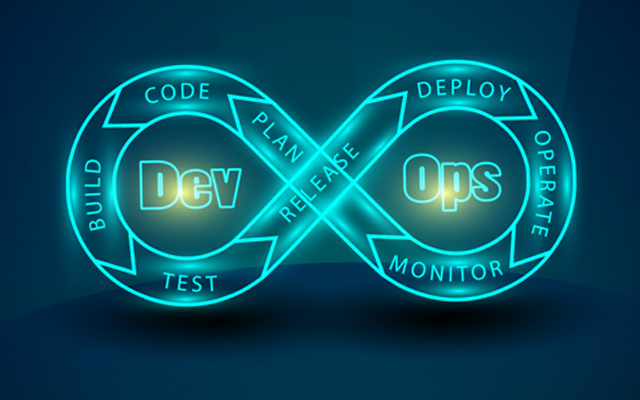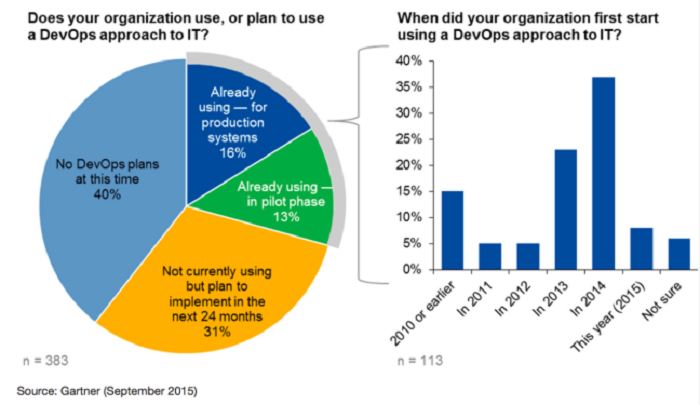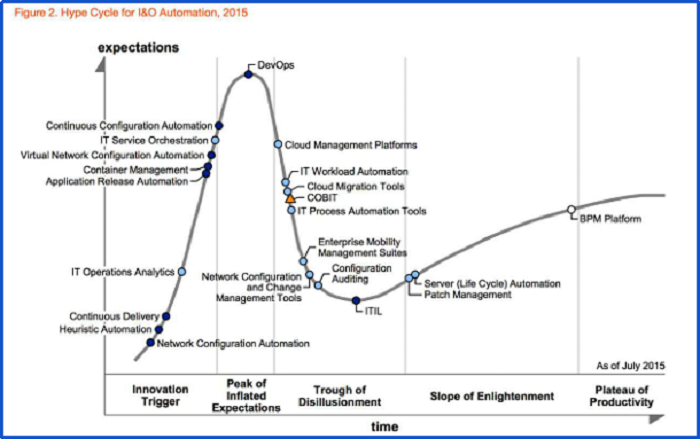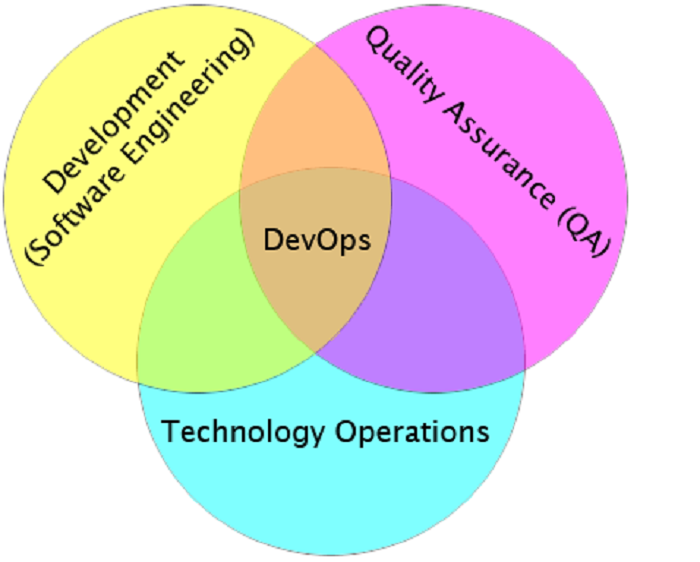
DevOps is a combination of development and operations and represents a culture, and practice. It stresses the collaboration and communication of both software developers (Dev) and Information Technology (IT) Operations and Maintenance (O&M) professionals (Ops) while boosting software delivery and infrastructure changes. It aims at establishing a culture and environment where software building, testing, and releasing can happen more conveniently, frequently, and reliably.
DevOps gradually gained predominance in 2016. Tech analysts predict the drive of basic cloud, mobile, and social demands will eventually influence companies to realize the cultural, performance, and economic benefits that DevOps best practices can secure.
Up to date and flexible companies have experienced the advantages of DevOps and continuous delivery. Furthermore, mature, large businesses are aware of the value of DevOps best practices, which has triggered a cultural transformation. However, these enterprises uphold a practical attitude towards DevOps. In 2016, before the extensive application of DevOps, enterprises performed DevOps testing experiments in non-key or new IT programs that involved process, automation, collaboration, and tool aspects. However, the current collaboration has improved work efficiency.
On observing DevOps solutions comment trends posted by real users on IT Central Station, we find that users who research and purchase DevOps solutions have changed. Previously, DevOps managers and release managers authored the majority of comments. Now, the number of comments on DevOps tools composed by architects, customer service managers, middleware software experts, and network engineers are on the rise. Furthermore, more mainstream IT buyers started adding DevOps tools into their budgets in 2016.

Source: Gartner (September 2015)
Currently, mature DevOps buyers are from software and technical industries that adopted modern practices and technologies at an early stage. On the other hand, large and Fortune 500 companies are experiencing a surge in the adoption rate of the DevOps approach. By the end of 2016, DevOps had proven to be an advantageous strategy thanks to its universal access and practice.
In 2016, more large businesses and organizations considered DevOps solutions. In the time to come, there will be an increasing number of more sophisticated instruments for automated association relying upon data analysis and problem-solving. This includes cross-system intelligent insight of infrastructure to mitigate performance risks of deployment sharing or aggregation computation, storage, and network resources.
As part of their overall strategy, global Fortune 500 companies will continue to establish DevOps teams. Additionally, with the utilization of new software, tools, and QA technologies, this momentum is expected to increase. Gone are the days when organizations responded to the adoption of DevOps with a cold shoulder, citing possibilities of a compromise in the product quality and service. The regular appearance of the advantages of DevOps and new QA technologies has ensured product quality and service.
The global top 500 companies began discussing their initiatives and cost savings results in the public forums. Furthermore, organizations are proud of their achievements due to the adoption of DevOps. DevOps is more challenging for large companies running a higher number of applications than for software companies running only one primary application. The large businesses can gain significant benefits by partially accepting the DevOps culture.
In 2016, the DevOps movement began to affect traditional development teams that failed to develop and transition to the real DevOps process fully but needed to accept fundamental DevOps concepts. Naturally, they needed to start from collaboration and then begin to pay more attention to end-users, agility, automation, and measurement mechanisms. Finally, and most importantly, they had to start using performance as a criterion.
In recent years, small IT teams and organizations turned their heads when dealing with DevOps. However, this trend is expected to change. DevOps has made substantial inroads into smaller organizations. Analysts believe observers will witness an influx of smaller IT teams shifting their development strategies to mirror the processes pioneered by large enterprises. Successful implementation of both DevOps culture and technology will facilitate smaller IT organizations to leverage agile development. This should improve time to market and increase their business value.

In the software development field, DevOps is still emerging, and the practice has no clear standards yet, which leads to hesitation by enterprises to fully accept this cultural transformation. The year 2016 will see companies building their own standards. Gradually, best practices will emerge and industries will apply them.
In 2016, we will experience the following major developments: further virtualization and clouding of development environments, a rise in the virtualization of developers' workstations, and an increase in the coverage of unit testing and functional testing through a variety of initiatives to achieve automatic capturing as well as monitoring architectural metrics and business Key Performance Indicators (KPIs). Finally, we will see architectural reorganization to expedite the application building, downsize the deployment package and speed up feedbacks to the engineers. APM will play an important role in achieving success in these areas.

Testing in DevOps is certain to be automated, engaging all members including product managers, developers, testers, and architects through collaboration so that the test can cover every aspect. When the product needs to be released online multiple times a day or requires a patch or a feature update, automated testing is the perfect choice to guarantee complete product testing. It is not only because automated testing is faster than manual testing, but it enables iterative tests for all history test cases of a specified component.
Quality Assurance (QA) in DevOps provides better QA by focusing on the overall production quality, instead of only testing certain details.
In DevOps, the collaboration between development teams is vital for code committing and a management model, test mechanism, code delivery cycle, feedback and monitoring systems. Developers should focus on writing code as well as the quality of the code. When testers identify a code problem as the cause of a bug or poor application performance, the code writer should be held accountable.
In the DevOps approach, the development team completes the delivery. The previous practice considers the development team and delivery team as separate teams who employ their preferred tools. The tool kits used in the delivery are tools utilized in the development process, simplifying the work of development testing personnel as they no longer need to change the tools.
What does a mature DevOps O&M system include? We think it should include the following:
● Automated testing
● Batch configuration of basic components
● Monitoring and warning
● Data visualization
● Collaboration and cooperation
A sophisticated O&M system can conduct a comprehensive analysis on the performance and warning messages of application, network, computation, storage, virtualization and other resources. Additionally, it can display the business health levels intuitively through a simple and easy-to-understand interface. When a fault occurs, it can receive the information the first time to locate the problem based on relevant information and narrow the fault location range (i.e., such as whether the problem is in the calculation, application or network) and then further clarify related problem ownership, so that experienced development and O&M personnel can handle the problem quickly without avoiding the responsibility.
DevOps has evolved as a technological solution/tool that is accepted by large and small organizations. Its advantages and results yielding ability have made it a winner among all organizational parameters.
References:
http://www.devopsdigest.com/2017-devops-predictions-6
https://www.gartner.com

2,605 posts | 747 followers
FollowPM - C2C_Yuan - July 8, 2020
Alibaba Clouder - June 10, 2020
Alibaba Clouder - January 11, 2021
Alibaba Clouder - December 25, 2020
Alibaba Clouder - September 9, 2020
Alibaba Clouder - November 18, 2020

2,605 posts | 747 followers
Follow DevOps Solution
DevOps Solution
Accelerate software development and delivery by integrating DevOps with the cloud
Learn More Alibaba Cloud Flow
Alibaba Cloud Flow
An enterprise-level continuous delivery tool.
Learn MoreMore Posts by Alibaba Clouder